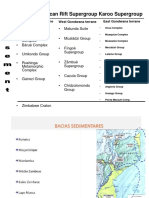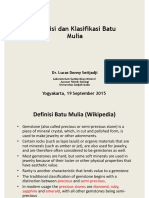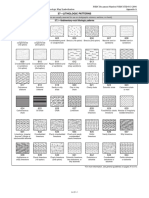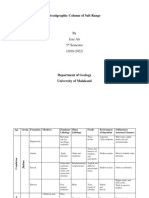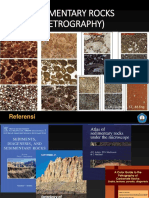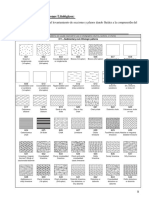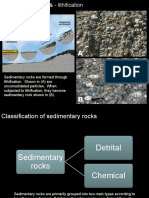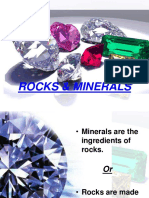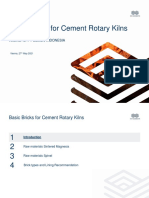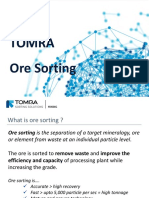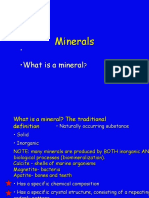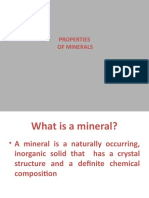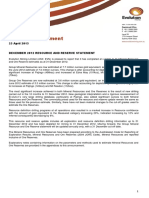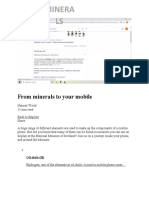0 ratings0% found this document useful (0 votes)
93 viewsGIA Corundum 7499 050307
GIA Corundum 7499 050307
Uploaded by
p6a4nduThe document provides information on GIA's source type classification system which separates rubies and sapphires based on their geologic origins and inclusion features. It outlines the relationships between four source types and lists some of the major commercial deposits worldwide for each type.
Copyright:
© All Rights Reserved
Available Formats
Download as PDF, TXT or read online from Scribd
GIA Corundum 7499 050307
GIA Corundum 7499 050307
Uploaded by
p6a4ndu0 ratings0% found this document useful (0 votes)
93 views1 pageThe document provides information on GIA's source type classification system which separates rubies and sapphires based on their geologic origins and inclusion features. It outlines the relationships between four source types and lists some of the major commercial deposits worldwide for each type.
Original Description:
GIA_Corundum_7499_050307
Original Title
GIA_Corundum_7499_050307
Copyright
© © All Rights Reserved
Available Formats
PDF, TXT or read online from Scribd
Share this document
Did you find this document useful?
Is this content inappropriate?
The document provides information on GIA's source type classification system which separates rubies and sapphires based on their geologic origins and inclusion features. It outlines the relationships between four source types and lists some of the major commercial deposits worldwide for each type.
Copyright:
© All Rights Reserved
Available Formats
Download as PDF, TXT or read online from Scribd
Download as pdf or txt
0 ratings0% found this document useful (0 votes)
93 views1 pageGIA Corundum 7499 050307
GIA Corundum 7499 050307
Uploaded by
p6a4nduThe document provides information on GIA's source type classification system which separates rubies and sapphires based on their geologic origins and inclusion features. It outlines the relationships between four source types and lists some of the major commercial deposits worldwide for each type.
Copyright:
© All Rights Reserved
Available Formats
Download as PDF, TXT or read online from Scribd
Download as pdf or txt
You are on page 1of 1
YOUR GIA RUBY AND SAPPHIRE REPORTS
This report provides information describing
the source type of your ruby or sapphire.
GIA’s Source Type Classification separates
rubies and sapphires according to their individual features and
properties. These features and properties are related to the
geologic environments in which they originated. These
environments may be categorized as classic metamorphic (often
marble), classic magmatic (often basaltic or related to an
eruptive event), and others with non-classic characteristics.
The detail below outlines the relationships between source types
and indicates how they relate to geographic origin. Further
information is available at www.gia.edu.
SAPPHIRES RUBIES
Commercial ruby and sapphire deposits worldwide CMT NCL CMG CMT NCL CMG
INTERNAL FEATURES* TYPE I TYPE II TYPE III TYPE IV
(CMT) Classic Metamorphic Clusters of zircon crystals
(NCL) Non–classic “Rutile” needles, or the lack of MAY BE EITHER:
Metamorphic or Magmatic any of those inclusion features High concentration of zircon
that designate types II, III and IV “Milky” zonal clouds and/or Cross-hatch, flake-like, stringer
general turbidity formations, or patterned clouds crystals or negative crystals
(except CMG Type IV rubies and with equatorial thin films
purple/pink sapphires)
(CMG) Classic Magmatic Negative crystals with
equatorial thin films
*These dominant inclusion features are only one of the factors considered in GIA’s Source Type Classification. Additional considerations may include; general color appearance, absorption spectra and chemistry.
The possible sources given below are not all encompassing. Some smaller sources may not be included and new sources are frequently discovered. The most significant sources for each type are given
at the time of printing. The information compiled here focuses on red and blue corundum (ruby and sapphire). However, any color of corundum may be classified using this system.
TYPE I TYPE II TYPE III TYPE IV
Possible CMT (Classic Metamorphic) ruby sources
• Burma (Mogok) • Sri Lanka • Sri Lanka • Madagascar • Burma (Mong Hsu) • Pakistan • Madagascar • Tanzania
• Afghanistan • Tajikistan • Tajikistan • Pakistan • Afghanistan • Tanzania • Kenya • Sri Lanka (rare)
• Kenya • Tanzania • Tanzania • Kashmir • Nepal • Vietnam
• Madagascar • Vietnam • Vietnam
• Pakistan
Possible NCL (Non–classic Metamorphic or Magmatic) ruby sources
• Tanzania • Kenya • Tanzania Unknown at this time • Kenya • Colombia
• Malawi • Madagascar
• Colombia
Possible CMT (Classic Metamorphic) blue sapphire sources
• Burma • Madagascar • Kashmir • Tanzania • Madagascar (rare) • Sri Lanka (rare) • Burma (rare) • Sri Lanka (rare)
• Sri Lanka • Tanzania • Madagascar • Vietnam (rare) • Madagascar • Tanzania
• Sri Lanka
Possible NCL (Non–classic Metamorphic or Magmatic) blue sapphire sources
• USA-Montana • Laos • Tanzania • Laos Unknown at this time • USA-Montana • Colombia
• Tanzania • Vietnam • Australia • Vietnam
• Australia • Colombia
Possible CMG (Classic Magmatic) ruby and sapphire sources
BLUE / GREEN / YELLOW SERIES RUBY AND PINK TO PURPLE SAPPHIRE
• Australia, Cambodia, China, Madagascar, Nigeria, Thailand, Vietnam, Laos • Thailand, Cambodia
©2007 GIA, INC. ALL RIGHTS RESERVED. CRC0407
You might also like
- Download Complete (eBook PDF) Essentials of Geology 13th Edition by Frederick PDF for All ChaptersDocument55 pagesDownload Complete (eBook PDF) Essentials of Geology 13th Edition by Frederick PDF for All ChaptersouvryyijenNo ratings yet
- Scheme For Sedimentary Rock Identification: Inorganic Land-Derived Sedimentary RocksDocument1 pageScheme For Sedimentary Rock Identification: Inorganic Land-Derived Sedimentary RocksJacky_LEOLEO100% (2)
- Lithologic PatternsDocument4 pagesLithologic PatternsAnicentus Namang50% (2)
- GeoMetallurgy - TeckDocument21 pagesGeoMetallurgy - Teckrolandoh1No ratings yet
- Example of Business Plan Hassai Mine SudanDocument344 pagesExample of Business Plan Hassai Mine Sudanfatimasc100% (1)
- Ore MegasDocument38 pagesOre MegasMadhu SudhananNo ratings yet
- Monazite & NeodyiumDocument15 pagesMonazite & NeodyiumNishit BeheraNo ratings yet
- Lab 11 - Marble, Quartzite, and Serpentinite S15Document41 pagesLab 11 - Marble, Quartzite, and Serpentinite S15Antonio M GodoyNo ratings yet
- minerals questionsDocument7 pagesminerals questionsahmedessameldin458No ratings yet
- Fall 2020 Trace Element Characteristics EmeraldsDocument20 pagesFall 2020 Trace Element Characteristics EmeraldsSanthosh VijayakumarNo ratings yet
- Petrology&Stractural GeologyDocument26 pagesPetrology&Stractural GeologyArgueza, John Ryan V.No ratings yet
- Laterite Geology: Guest Lecture For HMTG "GEA" ITB, May 23 2016Document63 pagesLaterite Geology: Guest Lecture For HMTG "GEA" ITB, May 23 2016Pasca Purniawan100% (1)
- NESOSILICATOSDocument20 pagesNESOSILICATOSdmeza22No ratings yet
- Cover of East African Rift Supergroup Karoo SupergroupDocument34 pagesCover of East African Rift Supergroup Karoo SupergroupLarissa CostaNo ratings yet
- Sedimentary rocks lab (1)Document1 pageSedimentary rocks lab (1)morgancb27No ratings yet
- Lab Minerales - GeologiaDocument6 pagesLab Minerales - GeologiaKaren GiraldoNo ratings yet
- ELS Q1 Module 9 Igneous Rocks How Are They FormedDocument12 pagesELS Q1 Module 9 Igneous Rocks How Are They FormedricomyraforeverNo ratings yet
- Enhanced Palamu Graphite BeltDocument19 pagesEnhanced Palamu Graphite Beltsauravpal141No ratings yet
- Fundamental Batu MuliaDocument6 pagesFundamental Batu Muliaaloysius andriantoNo ratings yet
- Earth and Life 2Document4 pagesEarth and Life 2Tantan WhootNo ratings yet
- 04 - 03 - 19 Talk 04 Breccias in Porphyry and Epithermal Systems - DavidCooke PDFDocument62 pages04 - 03 - 19 Talk 04 Breccias in Porphyry and Epithermal Systems - DavidCooke PDFbima pribadi100% (1)
- 37-Lithologic Patterns: (Lithologic Patterns Are Usually Reserved For Use On Stratigraphic Columns, Sections, or Charts)Document3 pages37-Lithologic Patterns: (Lithologic Patterns Are Usually Reserved For Use On Stratigraphic Columns, Sections, or Charts)jhoselyn100% (1)
- Mineral Science 2Document67 pagesMineral Science 2Saurav PrasadNo ratings yet
- SR ColumnDocument9 pagesSR ColumnAdnan KhanNo ratings yet
- Sedimentary Rocks2Document254 pagesSedimentary Rocks2yovieNo ratings yet
- Ruby GuideDocument2 pagesRuby GuidegpendarovskiNo ratings yet
- Cryptocrystalline and Macrocrystalline Magnesite OresDocument40 pagesCryptocrystalline and Macrocrystalline Magnesite Oresthanikachalam.cNo ratings yet
- Rocks and MineralsDocument38 pagesRocks and Mineralsmerry menesesNo ratings yet
- 2 - Sedimentary Rock ClassificationDocument45 pages2 - Sedimentary Rock ClassificationRay Yuda100% (1)
- Litho SymbolDocument3 pagesLitho SymbolzulNo ratings yet
- 10 GLY3711-Gemstones - April-2024Document60 pages10 GLY3711-Gemstones - April-2024Tomas RichardNo ratings yet
- CALCITE AND GARNET PROPERTIES by Nelson ArradazaDocument8 pagesCALCITE AND GARNET PROPERTIES by Nelson ArradazaNelson L. ArradazaNo ratings yet
- Group 7 Science Report Hand Out (G11)Document6 pagesGroup 7 Science Report Hand Out (G11)Jyne CatipayNo ratings yet
- Unit 11 Igneous Rocks Part 2Document27 pagesUnit 11 Igneous Rocks Part 2MinNo ratings yet
- Magnesite DissertationDocument47 pagesMagnesite DissertationMultiTuber100% (1)
- Ceramic Raw Materials Lecture 2Document24 pagesCeramic Raw Materials Lecture 2ephremNo ratings yet
- Simbologia para Patrones LitoDocument3 pagesSimbologia para Patrones LitoGerson DavidNo ratings yet
- Geology 101 Lab: Metamorphic Rock & Mystery RocksDocument3 pagesGeology 101 Lab: Metamorphic Rock & Mystery RocksRaj AndreNo ratings yet
- Sedimentary RocksDocument29 pagesSedimentary Rocksrobjmnz717No ratings yet
- Minerals CompressedDocument61 pagesMinerals CompressedHannah Joy Arrianne PascualNo ratings yet
- 3 - Basic Bricks - Webinar Version (PTSI Webinar)Document62 pages3 - Basic Bricks - Webinar Version (PTSI Webinar)neo 87100% (2)
- Metamorphic Rocks Identification Lab Answer Sheet-1Document2 pagesMetamorphic Rocks Identification Lab Answer Sheet-1morgancb27No ratings yet
- Chris Istanbul TrainingDocument32 pagesChris Istanbul TrainingJose CampillayNo ratings yet
- MinerologyDocument43 pagesMinerologySajid IqrarNo ratings yet
- 37 - Lithologic Patterns: (Lithologic Patterns Are Usually Reserved For Use On Stratigraphic Columns, Sections, or Charts)Document3 pages37 - Lithologic Patterns: (Lithologic Patterns Are Usually Reserved For Use On Stratigraphic Columns, Sections, or Charts)oscarNo ratings yet
- Northqld 2017 07 Tomra Ore PresentationDocument59 pagesNorthqld 2017 07 Tomra Ore PresentationMiguel AguileraNo ratings yet
- 05a PDFDocument13 pages05a PDFRoberta S.No ratings yet
- Cerro CoronaDocument17 pagesCerro CoronaJaime Mercado BenavidesNo ratings yet
- FYP Task 1 Paper Review: Widespread Abiotic Methane in ChromititesDocument14 pagesFYP Task 1 Paper Review: Widespread Abiotic Methane in Chromititesmini roseNo ratings yet
- Physical Properties of MineralsDocument44 pagesPhysical Properties of MineralsSaurav YadavNo ratings yet
- Properties of MineralsDocument41 pagesProperties of MineralsBeverly DatuNo ratings yet
- Chatoyancy': Minerals Igneous Metamorphic SedimentaryDocument3 pagesChatoyancy': Minerals Igneous Metamorphic SedimentaryLorna BacligNo ratings yet
- Phanerozoic Stratigraphy of India - 1Document3 pagesPhanerozoic Stratigraphy of India - 1Avinash UpadhyayNo ratings yet
- GypsumDocument20 pagesGypsumVinothkumar PalanisamiNo ratings yet
- Earth Sci ReviewerDocument4 pagesEarth Sci ReviewerjalimaoralphlorenzNo ratings yet
- DIAGENESESDocument145 pagesDIAGENESESamenmoftahNo ratings yet
- 0001.1 - Stratigraphy of South AfricaDocument24 pages0001.1 - Stratigraphy of South AfricaAndile MavusoNo ratings yet
- Download ebooks file (eBook PDF) Essentials of Geology 13th Edition by Frederick all chaptersDocument46 pagesDownload ebooks file (eBook PDF) Essentials of Geology 13th Edition by Frederick all chaptersinkerrashdi100% (4)
- Chrysoberyl Beal O: Crystal DataDocument1 pageChrysoberyl Beal O: Crystal Datap6a4nduNo ratings yet
- Part VI-Section 4 - Advertisements by Private Individuals and Private InstitutionsDocument23 pagesPart VI-Section 4 - Advertisements by Private Individuals and Private Institutionsp6a4nduNo ratings yet
- Unit 2 Pressure and Its Measurement 10CV35Document34 pagesUnit 2 Pressure and Its Measurement 10CV35p6a4nduNo ratings yet
- Sale Counter List JuneDocument9 pagesSale Counter List Junep6a4nduNo ratings yet
- Kannada Research Institute CatalogueDocument10 pagesKannada Research Institute Cataloguep6a4nduNo ratings yet
- Looking Sharper - Hubble Telescope - R Ramachandran - June 06-19 - 2009Document8 pagesLooking Sharper - Hubble Telescope - R Ramachandran - June 06-19 - 2009p6a4nduNo ratings yet
- The Question of History in Precolonial IndiaDocument13 pagesThe Question of History in Precolonial Indiap6a4nduNo ratings yet
- The Banking Industry of India: Akhilesh KumarDocument12 pagesThe Banking Industry of India: Akhilesh Kumarp6a4nduNo ratings yet
- A Letter To A Member of Parliament, On The Conclusion of The War With Tippoo Sultaun (1792)Document52 pagesA Letter To A Member of Parliament, On The Conclusion of The War With Tippoo Sultaun (1792)p6a4nduNo ratings yet
- From India To The World: DHL Packet International & DHL Packet Plus InternationalDocument2 pagesFrom India To The World: DHL Packet International & DHL Packet Plus Internationalp6a4nduNo ratings yet
- Vol38 2 9 ConferencesDocument3 pagesVol38 2 9 Conferencesp6a4nduNo ratings yet
- The Pre Historical Secrets of IndiaDocument175 pagesThe Pre Historical Secrets of Indiap6a4ndu100% (3)
- The Great Hedge of India - Roy MoxhamDocument9 pagesThe Great Hedge of India - Roy Moxhamp6a4nduNo ratings yet
- Mineral Resources Part 2Document31 pagesMineral Resources Part 2Eji AlcorezaNo ratings yet
- RAFIF LAPORAN GEOFISIK FixDocument19 pagesRAFIF LAPORAN GEOFISIK FixrevrafifNo ratings yet
- 882.pdf Ore Reserve and Resources With Metal EquivalentDocument23 pages882.pdf Ore Reserve and Resources With Metal EquivalentdjabiaNo ratings yet
- Process Block Flow DiagramDocument1 pageProcess Block Flow DiagramEden Joy GollemNo ratings yet
- Minera LS: From Minerals To Your MobileDocument9 pagesMinera LS: From Minerals To Your MobileRomar SayoNo ratings yet
- Natural Silica Materials: SilicatesDocument20 pagesNatural Silica Materials: SilicatesAnisa Ingin Clalu TersenyumNo ratings yet
- Mining PDFDocument45 pagesMining PDFVie C. DuronNo ratings yet
- Instant Ebooks Textbook Extractive Metallurgy of Copper 6th Edition Mark E. Schlesinger - Ebook PDF Download All ChaptersDocument41 pagesInstant Ebooks Textbook Extractive Metallurgy of Copper 6th Edition Mark E. Schlesinger - Ebook PDF Download All Chaptersmossonhayase100% (2)
- Fillers For Paints - GysauDocument319 pagesFillers For Paints - GysaukiddprofessorNo ratings yet
- Pampa Camarones High Grade Copper Operation in Chile: The CompanyDocument1 pagePampa Camarones High Grade Copper Operation in Chile: The CompanyBotacura Minerals acuña moralesNo ratings yet
- Schwert Mann 1988Document4 pagesSchwert Mann 1988Parama SivamNo ratings yet
- 1 PBDocument23 pages1 PBDINESHNo ratings yet
- Department of Civil Engineering Environmental Engineering Laboratory Chemical List Practical I&IIDocument8 pagesDepartment of Civil Engineering Environmental Engineering Laboratory Chemical List Practical I&IISureshSawantNo ratings yet
- Polymorphs of C3SDocument21 pagesPolymorphs of C3SGulam DastgirNo ratings yet
- Journey To Zero Fatalities: Rob DaviesDocument25 pagesJourney To Zero Fatalities: Rob DavieshazopmanNo ratings yet
- Hedenquist 2018 - Epithermal Features at Shallow DepthDocument26 pagesHedenquist 2018 - Epithermal Features at Shallow Depthcarlos arroyo huaracaNo ratings yet
- Commodities Span MarginDocument3 pagesCommodities Span MarginVikasNo ratings yet
- Underground Mining - Unsupported MethodsDocument15 pagesUnderground Mining - Unsupported MethodsPuvanendran GajananNo ratings yet
- Ores and GanguesDocument16 pagesOres and GanguesVijay Jain100% (1)
- Butt and Clutzel, (N.D.) - Nickel Laterite Ore Deposits - Weathered SerpentinitesDocument6 pagesButt and Clutzel, (N.D.) - Nickel Laterite Ore Deposits - Weathered SerpentinitesBenjamin Jhovzen Saighn ZschechNo ratings yet
- CV Hermanto Tarihoran-2Document1 pageCV Hermanto Tarihoran-2hermantotarihoranNo ratings yet
- Jadeite Benito California: CountyDocument8 pagesJadeite Benito California: CountyJmdoveNo ratings yet
- 02 - Metode Tambang Bawah TanahDocument12 pages02 - Metode Tambang Bawah TanahDini JuliaaNo ratings yet
- Advanced Open Pit Planning and Design 20Document167 pagesAdvanced Open Pit Planning and Design 20Gbenga Adewumi100% (2)
- BioleachingDocument22 pagesBioleachingalborz99100% (1)
- Basics in GeologyDocument66 pagesBasics in GeologyBac mathNo ratings yet
- Gold Mines in Ontario MapDocument3 pagesGold Mines in Ontario MapStacyNo ratings yet
- Procemin 2015 Rejection of Pyrite: Challenges and Sustainable Chemical Solutions IIDocument20 pagesProcemin 2015 Rejection of Pyrite: Challenges and Sustainable Chemical Solutions IINereo Spengler100% (1)
- Reporte Tecnico Oro Valle Spain2020Document199 pagesReporte Tecnico Oro Valle Spain2020javicol70No ratings yet













